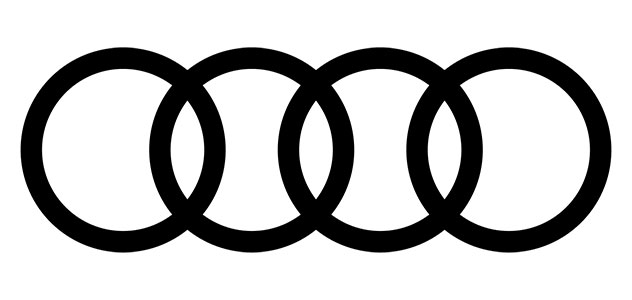Audi is a car manufacturer that was established in 1885 in Germany, and today, they are one of the world’s best luxury car manufacturers. Today, Audi is a member of the Volkswagen Group, and all of its vehicles are produced in nine production facilities that can be found all across the world. That’s why in this article, we are going to find out the important events that shaped Audi and how they became one of the most respected car manufacturers in the world.
Important Events in Audi History
It all started when the automobile company named Wandered was established in 1885, and it later became a branch of Audi AG. After some years, another company called NSU also later merged into Audi. During this time, NSU was the company that supplied chassis for Gottlieb Daimler’s four-wheeler.
In 1899, August Horch decided to establish the A. Horch&Cie company in the Ehrenfeld, Cologne. After three years, he moved his company to Reichenbach imVogtland, and two years after that, he founded the August Horch and CieMotorwagenwerke AG. But after running in some troubles by being the chief financial officer, Horch decided to leave Motorwagenwerke and start a new company called August HorchAutomobilwekre GmbH. However, his former business partners decided to sue him for trademark infringement. The supreme court of Leipzig later agreed that the Horch brand belonged to the August Horch company.
After that, Horch decided to have a meeting with his trusted business friends from Zwickau to discuss the name of the company. In 1910, Horch finally settled with the name Audiwerke GmbH, and it was also during that same year when they launched the Audi Type A, which instantly became popular. After the release of their first car, Audi soon began participating in different races and was able to win for three consecutive years in the International Austrian Alpine Run. This success marked the beginning of Audi and began their hunger for success.
1915-1940
After the success of the Audi Type A, Audi released several car models such as the 5720cc, 3564cc, and the 4680cc. August Horch left his position in the company to hold a job in the Ministry of Transport in 1920. However, he still remained one of the board of trustees for Audi. After a year, Audi was the first car manufacturer to ever produce a left-hand drive car.
In 1928, most of the Audiwerke AG shares were bought by Jorgen Rasmussen, and it was also that same year when he purchased the remaining shares of another famous company in the United States, which is the Rickenbacker. This move gave Rasmussen the rights to Rickenbacker’s manufacturing equipment for eight-cylinder engines. That is why in 1929, Rasmussen had these engines installed in the Audi Zwickau and Audi Dresden models.
In 1932, Audi decided to merge with Wanderer, DKW, and Horch, which formed the Auto Union AG. This is the reason why Audi has four rings in their logo because it symbolizes the four companies that merged together. During that same year, Audi launched the first-ever volume-built car in the world, which had a four-wheel-drive. By the end of the 1930s, Audi started to join in Grand Prix Races, and they also established a new office in Chemnitz. Plus, they also introduced their first 16-cylinder racing car and began to conduct a systematic crash test and rollovers with their vehicles.
1940-1980
In 1941, Audi stopped producing cars and started manufacturing military vehicles because of the war. This is also the reason why Audi became a famous supplier of vehicles in the mid-1940s. Just like other German manufacturers, Auto Union production plants became a target for allied bombing in the second world war.
That is why in 1945, the United States Army got a chance to raid Audi’s plants, which caused the company considerable damage. A few years after that, Auto Union AG was removed from the commercial register. But Audi did not lose hope, and they began to put together pre-war car models in 1949. It was also during that time when the company was renamed to Auto Union GmbH, and they continued DKW’s tradition of creating front-wheel-drive cars that had two-stroke engines.
In 1953, Audi launched Sounderklasse, which they developed before the war in Chemnitz. After a few years, Daimler-Benz decided to take over the Auto Union and establish a new plant in Ingolstadt, which later became one of the most modern production plants in Europe during that time. In 1964, Volkswagen once again took over Auto Union and bought the majority of its sales.
Come 1966, Auto Union became a fully-owned subsidiary of Volkswagen AG, and the new owner decided not to give up Audi’s name and logo. That same year, they released the DKW Model F 102 as an Audi car. This was also the time when Audi cars made significant changes and redesigns of their models. In 1972, Audi launched a mid-size car; they called the Audi 80.
Towards the end of the ‘70s, Audi released the Audi 100 Avant and Audi 50, which are both incredibly reliable and wallet-friendly cars.
1980-2000
Audi was the first car company that introduced a fully-galvanized body in the 1980s, and it received the Golden Steering Wheel award and Grand Austrian Automobile prize. In the ‘90s, Audi released some of their best car models ever, which includes the Audi Cabriolet, Audi 11, Audi S4, Audi 8, and the Audi 100 Avant. And in the 2000s, Audi once again changed the car industry by being the first car manufacturer that included peripheral white LEDs in their cars. They also made the first 12-cylinder engine in 2007, which they put in the Audi Q7.
Check out all the many different luxury car brands to find your next ride.

